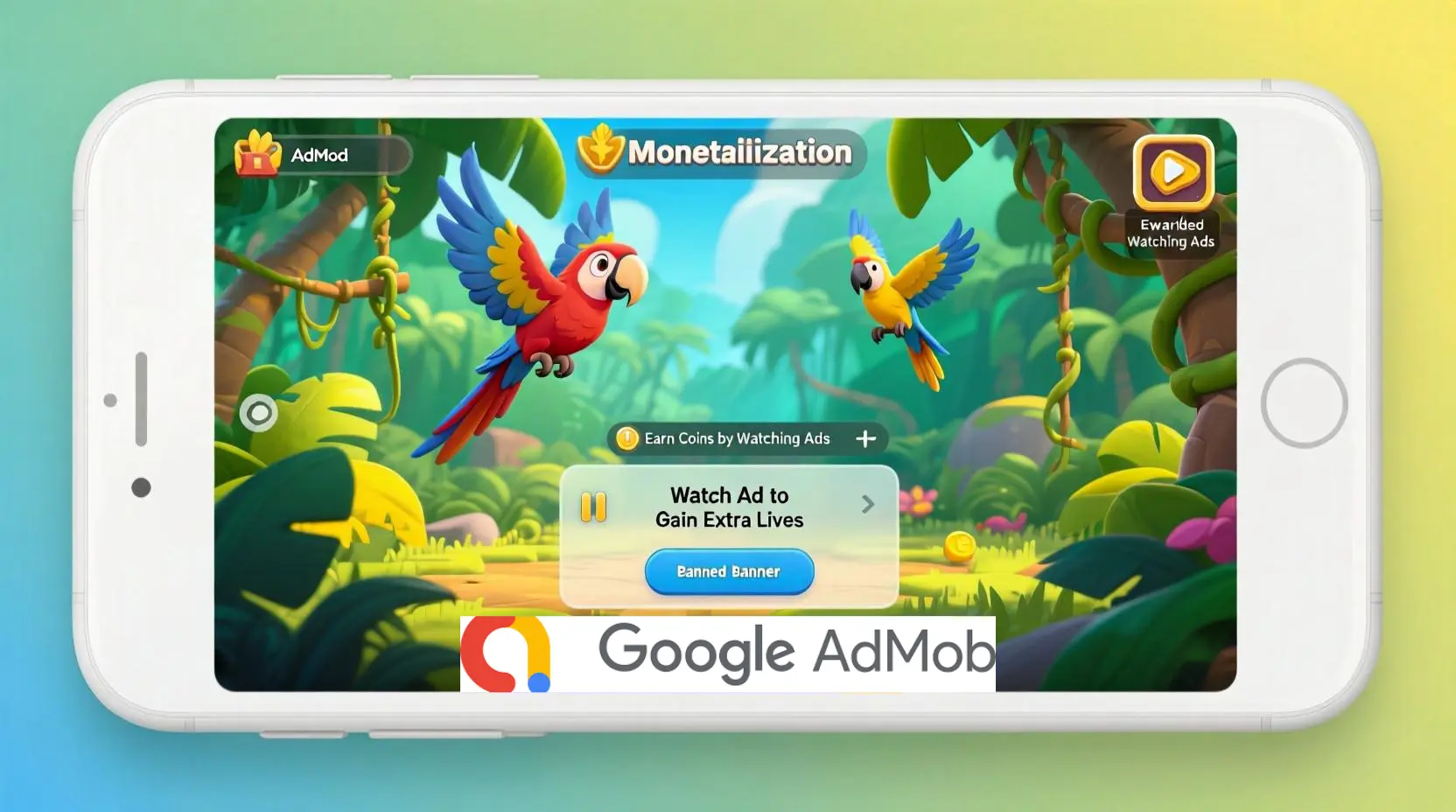In today’s fast paced mobile gaming industry, developers are constantly searching for ways to turn their creativity into sustainable income. One of the most effective and widely used tools for game monetization is Google AdMob. Whether you are an indie developer or part of a professional mobile gaming studio, AdMob provides the opportunity to earn revenue by displaying ads inside your game while keeping the user experience engaging.
This guide explores everything you need to know about game monetization with AdMob from how it works, its benefits, ad formats, implementation tips, and strategies to maximize revenue.
What is AdMob?
Google AdMob is a mobile advertising platform that allows developers to integrate ads into their Android and iOS apps. Launched in 2006 and later acquired by Google, AdMob has become one of the most trusted solutions for app monetization. It connects developers with advertisers, showing relevant ads to players and generating income whenever users interact with those ads.
Unlike traditional paid apps, where users pay upfront, AdMob enables developers to offer games for free while still earning money. This is crucial in today’s gaming ecosystem, where free to play games dominate the market.
Why Choose AdMob for Game Monetization?
When it comes to mobile game monetization, there are several platforms available, but AdMob stands out for multiple reasons:
- Seamless Integration – AdMob’s SDK can be easily integrated into Unity, Unreal Engine, and other development frameworks.
- Diverse Ad Formats – Developers can choose from various ad types such as banner ads, interstitials, rewarded ads, and native ads.
- High Fill Rates – Backed by Google’s massive advertiser network, AdMob ensures a high percentage of ads are filled, which translates into more revenue.
- Smart Analytics – With Google Analytics for Firebase integration, developers can track player behavior and ad performance in real time.
- Global Reach – AdMob serves ads worldwide, allowing developers to monetize their games across multiple regions.
Types of AdMob Ads for Games
Choosing the right ad format is critical to balancing player experience with revenue generation. Here are the main AdMob ad types:
1. Banner Ads
- Small rectangular ads displayed at the top or bottom of the screen.
- Best for casual games where constant but non intrusive visibility is acceptable.
- Generates steady but lower revenue compared to other formats.
2. Interstitial Ads
- Full screen ads that appear during natural game pauses (e.g., between levels).
- More engaging and higher paying than banner ads.
- Should be used strategically to avoid frustrating players.
3. Rewarded Ads
- Players voluntarily watch video ads in exchange for in game rewards (extra lives, coins, or power ups).
- Highly popular because they create a win win situation: players benefit from rewards, and developers earn revenue.
- Considered one of the most effective monetization strategies for mobile games.
4. Native Ads
- Customized ads that blend seamlessly with the game’s design.
- Provide a non disruptive experience while keeping engagement high.
- Require more development effort but result in better user satisfaction.
How to Monetize Your Game with AdMob
If you’re new to monetization, here’s a simplified step by step guide:
- Create a Google AdMob Account
- Sign up using your Google account at admob.google.com.
- Add Your Game
- Register your app by providing details such as app name, platform (iOS/Android), and store link.
- Generate Ad Units
- Choose the ad formats you want and create unique ad unit IDs for each placement.
- Integrate the SDK
- Download the AdMob SDK or use Google Mobile Ads Unity plugin for game engines.
- Implement Ads in Your Game
- Place ad units in appropriate sections of your game, ensuring they do not disrupt gameplay.
- Test Ads
- Use test ads before publishing to avoid policy violations.
- Publish and Monitor
- Once live, monitor performance via the AdMob dashboard and optimize placement and frequency.
Best Practices for Game Monetization with AdMob
Monetization is not just about placing ads it’s about maximizing revenue without harming player retention. Here are proven strategies:
1. Prioritize User Experience
Players won’t stick around if ads are too frequent or disruptive. Always maintain a balance between monetization and gameplay.
2. Use Rewarded Ads Wisely
Rewarded video ads are the most player friendly format. Offer meaningful rewards that enhance gameplay but don’t break game balance.
3. Test Ad Placement
Experiment with different placements for interstitial ads. Showing them at natural breaks (e.g., after completing a level) prevents frustration.
4. Leverage Mediation
AdMob offers mediation tools that allow you to connect multiple ad networks, increasing competition for your ad space and boosting revenue.
5. Optimize with Analytics
Use Firebase Analytics to understand player behavior. For example, if players leave after seeing an ad, reconsider its placement or frequency.
6. Localize Ads for Global Reach
If your game targets multiple countries, use AdMob’s targeting features to show relevant ads based on location and language.
Common Mistakes to Avoid
Even with the best platform, poor implementation can reduce your game’s revenue potential. Avoid these mistakes:
- Overloading the game with ads – Too many ads lead to negative reviews and high uninstall rates.
- Ignoring rewarded ads – Skipping rewarded ads means losing out on one of the highest-performing formats.
- Not following AdMob policies – Violating Google’s ad policies can result in account suspension.
- Failing to A/B test – Without testing different strategies, you may miss opportunities for higher revenue.
Future of Game Monetization with AdMob
The mobile gaming industry continues to evolve, and so does AdMob. With the rise of AI powered ad personalization, in app bidding, and cross platform monetization, developers will have more tools to maximize revenue. Rewarded ads and native experiences are expected to dominate, as players prefer ads that add value rather than disrupt their gaming journey.
Moreover, the integration of machine learning algorithms helps AdMob deliver smarter, more relevant ads, improving both developer revenue and user satisfaction.
Conclusion
Monetizing your game with AdMob is one of the most effective ways to generate sustainable income while keeping your game free for players. By choosing the right ad formats, focusing on user experience, and leveraging data analytics, developers can strike the perfect balance between revenue and retention.
Whether you are building a casual puzzle game or a fast paced action app, Google AdMob provides the tools you need to succeed in today’s competitive mobile gaming market. Start small, test different ad strategies, and gradually refine your monetization model to achieve long-term success.
Tokyo Back Alleys collection
All assets are optimized for game engines and all major 3D packages. Formats: Blend 3.6+ only, OBJ, FBX, Unreal Project



Awesome blog! Do you have any helpful hints for aspiring writers? I’m planning to start my own site soon but I’m a little lost on everything. Would you suggest starting with a free platform like WordPress or go for a paid option? There are so many choices out there that I’m completely overwhelmed .. Any suggestions? Appreciate it!
Nice read, I just passed this onto a colleague who was doing some research on that. And he just bought me lunch since I found it for him smile Therefore let me rephrase that: Thanks for lunch! “We have two ears and one mouth so that we can listen twice as much as we speak.” by Epictetus.